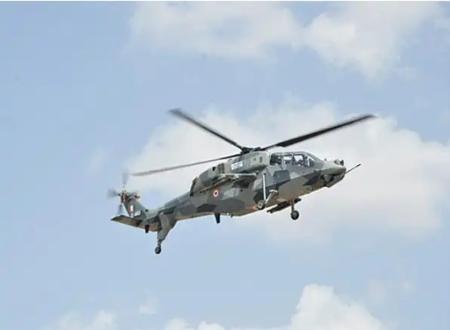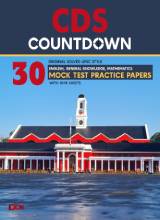Must Know about HAL Light Combat Helicopter (LCH)
How's the Josh Warriors?
Hello Folks, I hope you are applying every inch of hard work and effort to earn the prestigious uniform of the Indian Armed Forces. In this appreciable blog, I am going to profile one of the elite combat helicopters i.e. HAL Light Combat Helicopter (LCH)
Interesting Features of the HAL Light Combat Helicopter (LCH):
ROLE
Attack helicopter
COUNTRY
India
CREW
Two (Pilot and Co-Pilot)
ENTRY INTO SERVICE
2013
MAXIMUM SPEED
275 km/h
ROCKETS
Unguided rockets
MISSILES
MBDA air-to-air missiles, air-to-surface missiles, anti-radiation missiles and Helina anti-tank guided missiles
BOMBS
Iron bombs, cluster bombs and a grenade launcher
MANUFACTURER
Hindustan Aeronautics Limited (HAL)
OPERATORS
Indian Army and Indian Air Force
- The Light Combat Helicopter (LCH) was designed and built by Hindustan Aeronautical Limited (HAL).
- It is an attack helicopter derived from the existing Dhruv helicopter.
- The LCH can be deployed in various roles including tracking slow-moving aerial targets, insurgency, destroying enemy defences, search rescue, anti-tank and scouting.
- A data link system transmits mission data to mobile platforms and ground stations operating within the network.
- The LCH was developed to meet the requirements of the Indian Air Force and the Indian Army, who have ordered 62 and 114 units respectively.
- The Indian Air Force procured 64 LCHs as part of a $4 billion contract signed with Hindustan Aeronautics in March 2011.
- The helicopters are armed with Helina missile with an extended range of 7 km, a missile warning system and anti-missile countermeasures.
Design and Development of the HAL Light Combat Helicopter (LCH):
- The LCH is effective as both, an anti-infantry and anti-armour helicopter.
- The main and tail rotor diameters of HAL LCH are 13.3 m and 2.05 m respectively.
- The two-seater craft also has a tricycle crashworthy wheel landing gear and stealth capabilities.
- The flight controls and hydraulics of Dhruv have been redesigned for the Light Combat Helicopter.
- The HAL unveiled its plan to build the LCH in 2006, and it was approved by the Indian Government in the year of 2007 at a development cost of INR 3.76 billion.
- The prototype LCH helicopter was showcased at the Aero India Show in 2007.
- It successfully completed a flight test in March 2010, which included low-speed and low-altitude runs.
Armament and Cockpit of the HAL Light Combat Helicopter (LCH):
- The helicopter is equipped with electronic warfare systems and advanced weapons systems, including a chin-mounted, twin-barrel M621 20 mm cannon on a Nexter THL-20 turret, 70mm rockets, MBDA air-to-air, air-to-surface and anti-radiation missiles, and Helina anti-tank guided missiles.
- The explosive ordnance includes iron bombs, cluster bombs and grenade launchers.
- The LCH has a glass cockpit accommodating two crew, who sit one behind the other.
- The cockpit is equipped with multifunction displays, target acquisition and designation systems, and a digital video recorder to capture footage of the battlefield for use in debriefing.
- A helmet-mounted target system controls the turret guns mounted on the helicopter’s fuselage.
Sensors and Countermeasures of the HAL Light Combat Helicopter (LCH):
- The LCH is equipped with state-of-the-art sensor suite.
- It includes a charge-coupled device camera, a forward-looking infra-red camera and a laser designator.
- The two cameras capture the location and position of enemies, ensuring clear visibility during bad weather conditions.
- The helicopter is also fitted with radar and laser warning receivers, a missile approach warning system, countermeasure dispensing systems and a missile jammer.
Engine and Performance of the HAL Light Combat Helicopter (LCH):
- The helicopter is powered by two HAL/Turbomeca Shakti turboshaft engines.
- An engine generates up to 871 kW and can run for up to 3,000 hours without any maintenance.
- Each engine weighs 205 kg and has an output speed of 21,000 rpm.
- The engine received European Aviation Safety Agency certification in 2007 and features a Full Authority Digital Electronic Control System, which decreases the work of the pilot by automatically counting engine cycles.
- The LCH has a cruise speed of 260 km/h and a max speed of 275 km/hr with a never-exceed speed of helicopter is 330 km/h.
- The LCH can climb at a rate of 12 m/s, and hits its maximum altitude and service ceiling at 2,743 m and 6,500 m.
I hope the article was helpful for all the defense aspirants, if you have any doubt at all or you want to suggest anything then please leave a comment to help you in the least possible time!!
Keep Your Motivation High & Stay Updated to the Defence Direct Education
⚔ Jai Hind ⚔






 Order Now on Amazon
Order Now on Amazon
